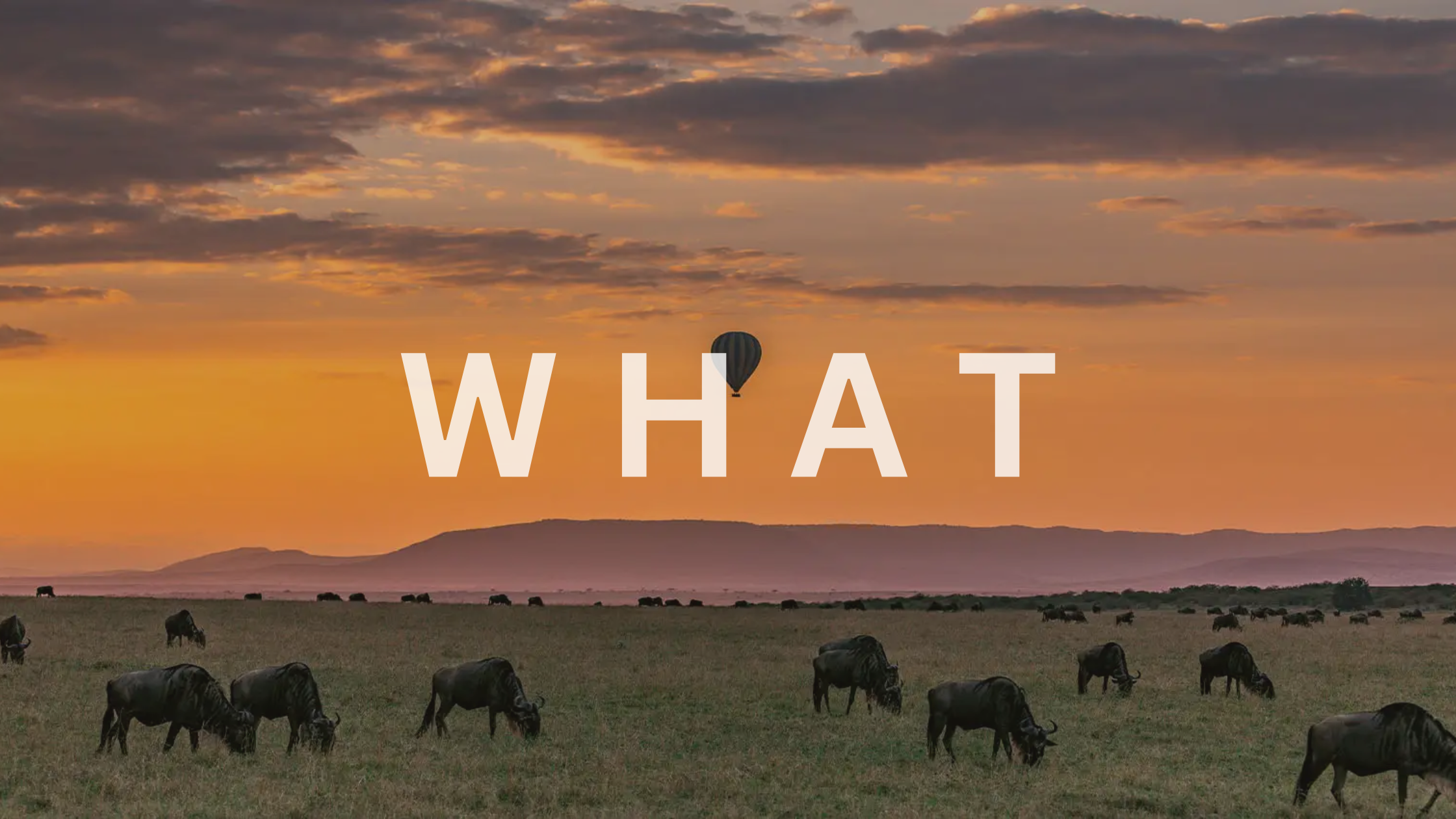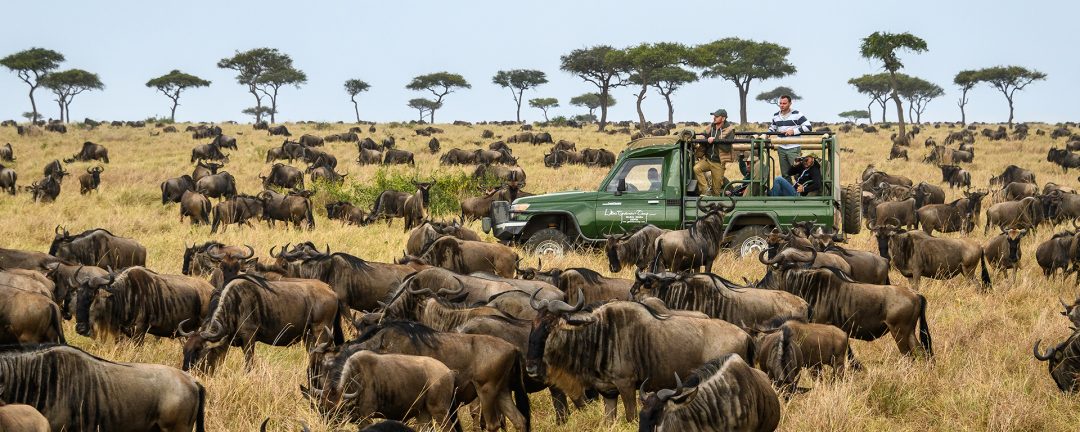‘The only man I envy is the man who has not yet been to Africa – for he has so much to look forward to.’ – Richard Mullin
As you peek out your binoculars at the far end of your game lodge, or at the edge of your jeep seat, a cloud of dust fills the air in the distance. Beneath your feet, the ground starts to tremor as thousands of wildebeest charge toward the Mara River.
Exhilarating, with palpable excitement and fear, alongside mighty beasts, there really isn’t anything that comes quite close to this experience- what you’re witnessing is the Great Migration.

So what is the Great Migration?
The Great Migration is the largest herd movement of over a million animals across the Serengeti-Mara ecosystem. Guided by survival instinct, the wildebeest traverse along age-old migration routes in a circular pattern, through Tanzania and Kenya. It still remains unproven as to how the wildebeest chart their course, but it is generally believed that their response to the weather dictates their journey; they follow seasonal rains and the growth of new grass.
Because so many animals rely on wildebeest and zebra for food, the Migration attracts many other species, making for exciting sightings of diverse species. The movement of over 1.5 million wildebeest and zebra, gazelle, and impala will attract predators like lions, cheetahs, hyenas, and Nile crocodiles.

The animals will start from the Ngorongoro Conservation Area in the south of the Serengeti in Tanzania, up through the Serengeti, and across into the Masai Mara in Kenya, before returning south to Serengeti.
Towards end-May, the wildebeest slowly move up through Serengenti’s western corridor to cross the Grumeti River in Tanzania and then further into Mara. The Grumeti River crossings aren’t as spectacular as the famous Mara crossings, but there is still enough movement to track.
The Mara River crossings constitute the ‘peak season’ for the Migration and take place between August and October. Situated on the border between the two countries, this crossing marks the most treacherous point of the journey and hence, makes for the most dramatic river crossing. Also, the wildebeest have a more concentrated route through Mara, as compared to the vast and open plains of the Serengeti, hence, August to October will see a majority of crowds flocking to spot the herds.
It’s worth noting that the herds arrive at different times each year, depending on the rains and their crossing the Mara River is not guaranteed. Sometimes they’ll arrive at the bank and leap across immediately, while at other times they may wait, or even retreat.

The key to planning a great Migration holiday is first understanding the phenomenon and then weaving your way through the various logistical arrangements required. Here’s what you should be considering as you plan your holiday.
Pre-planning: Holidays are to be typically booked between 6 months to a year prior to departure.
Minimum stay: At least 5 nights (considering crossings are never guaranteed and the longer you stay, the more time you have for sightings).
Accommodation type:
There’s much to consider when choosing where you’d like to stay- between location, luxury, camp type, etc. myriad options present themselves to be considered.
Needless to say, location is of prime importance, and proximity to the Mara River ensures unrivaled sightings. The Masai Mara National Reserve is open to the public and day visitors and if you’re looking for a sense of exclusivity then it’s advisable to stay in a private conservancy.
Private conservancies are separate from the main Game Reserve. They are on the border, and often encompass important migratory corridors. Camps in private conservancies are co-managed between tourism partners and the original landowners- the Maasai. The land is leased and the funds generated by tourism are invested back into the community to protect the ecosystem and sustain the Maasai.
While selecting accommodation, you have the choice between permanent lodges and mobile camps and each has its own level of luxury and additional amenities to suit your budget.
When you’re far out in the wilderness for eight to ten days, creature comforts are important. And comfort can spell different things for different people. For some, it’s a comfortable bed, cozy bonfire, and great company to discuss the day’s sightings. For others, it could be an indulgent soak in a tub under the stars with a loved one.
The right travel partner will be able to guide you through the options available basis all these factors.
Good to know: For a quieter and (possibly) enriching experience, staying in a private conservancy is your best bet. It allows for crowd-free game drives and the pleasure of enjoying a wilderness experience minus the congestion of other vehicles. You also have the opportunity to undertake guided nature walks, and night safaris, set up bush picnics at enviable locations, and go offroading – activities not permitted in the national reserve.
ET recommends: Mara Conservancy camps- Mahali Mzuri, Mara Plains Camp, Cottar’s 1920s Safari Camp
Travel partner:
Choosing the right travel partner for your holiday is important because their guidance and assistance will determine not just your safari experience, but more importantly, your knowledge and perspective of the destination as a whole. The right travel partner will understand your needs and recommend the right accommodation type and a proficient guide whose practices are ethical and culturally sensitive. They also recommend additional experiences to augment your time in Africa.
With established and longstanding relations with trusted local partners, when you book with Eastern Travels, your holiday is in the hands of a trained professional.
Connect with us, and let our travel advisors help you plan the most exhilarating African getaway.

